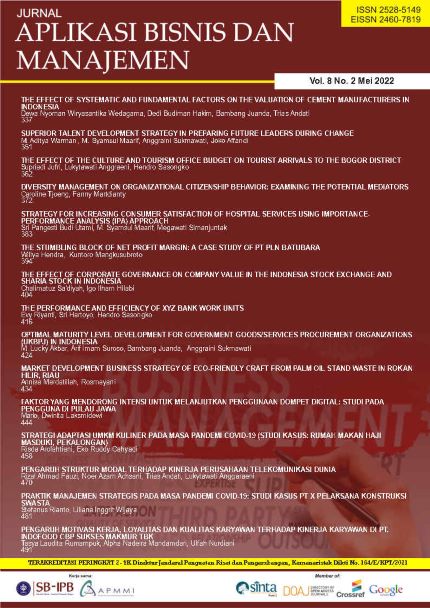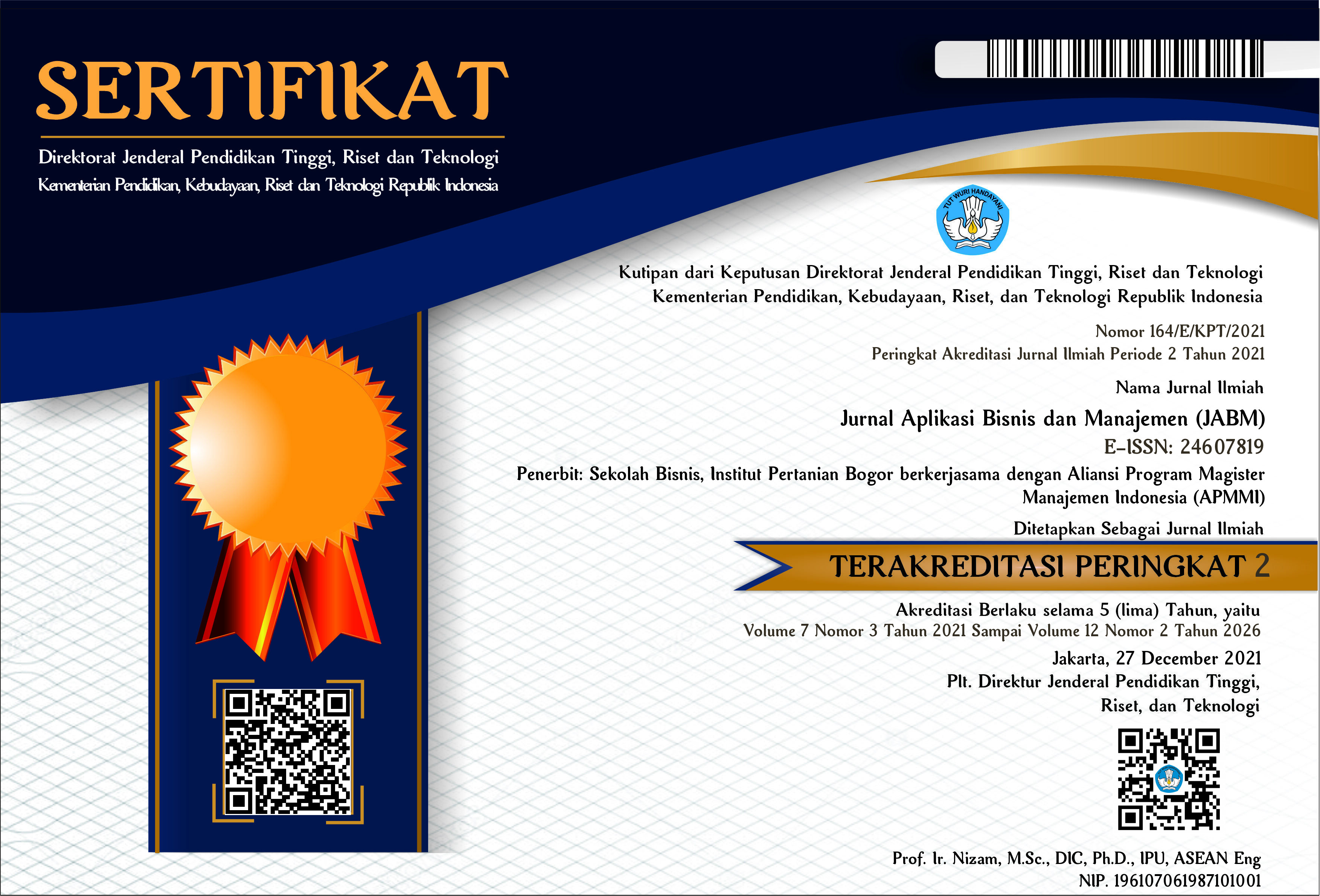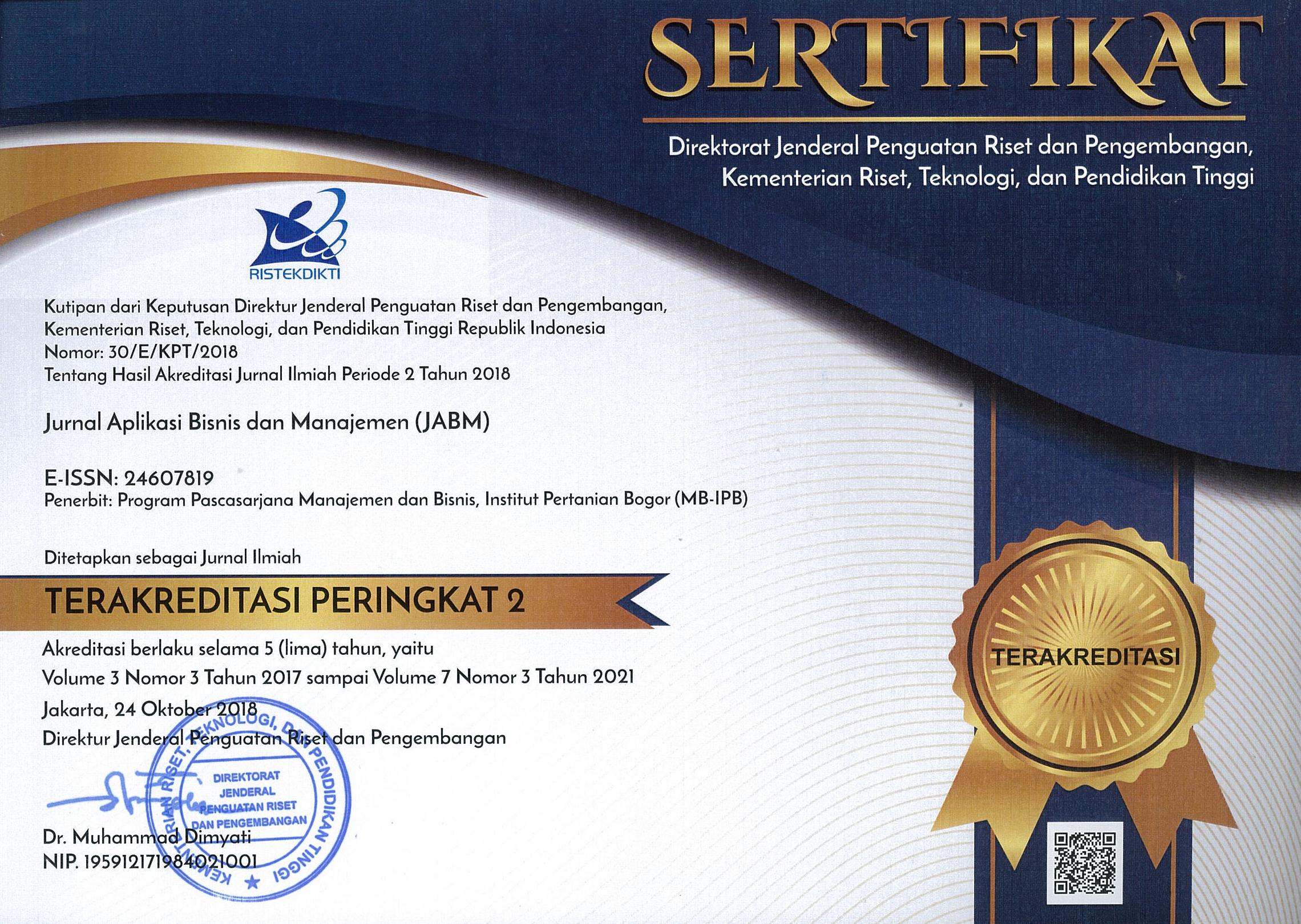Efektivitas Sistem Kerja di Rumah Dalam Mendukung Work-Life Balance, Employee Engagement dan Kinerja Karyawan
Abstract
The objective of this study was to analyze the effectiveness of work from home on the work-life balance (WLB) and employee engagement (EE) which affects work performance of employees. A Series of surveys and interviews were conducted by distributing an online questionnaire. Sixty-seven respondents involved in the experiment were workers at PT Adira Insurance Tbk. that was assigned to work from home. The research method was descriptive and case study. The construct has good reliability for the three variables, namely WLB, EE, and employee performance with composite reliability and Cronbach's Alpha were above 0.8- 0.70, above the minimum composite reliability value and Cronbach's Alpha of 0.70 and 0.60, respectively, as per SmartPLS output. The effect of WLB on EE, WLB on performance, and EE on performance according to the original sample estimate PLS value is 0.4568, 0.1356, and 0.6957, respectively, with significances below 5%, as indicated by t-statistic values of 14.0501, 5.8591, and 38.9858, respectively, which was greater than the t-table value of 1.962. The positive original sample estimate value indicates that WLB has positive effects on EE and performance as well as EE on performance. In conclusion, the work from home system supports the work-life balance, employee engagement, and performance of PT Asuransi Adira Dinamika employees.
Keywords: employee, employee engagement, performance, work from home, work-life balance








